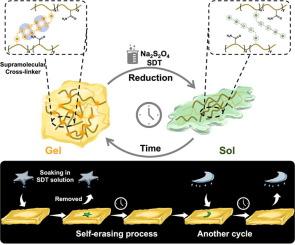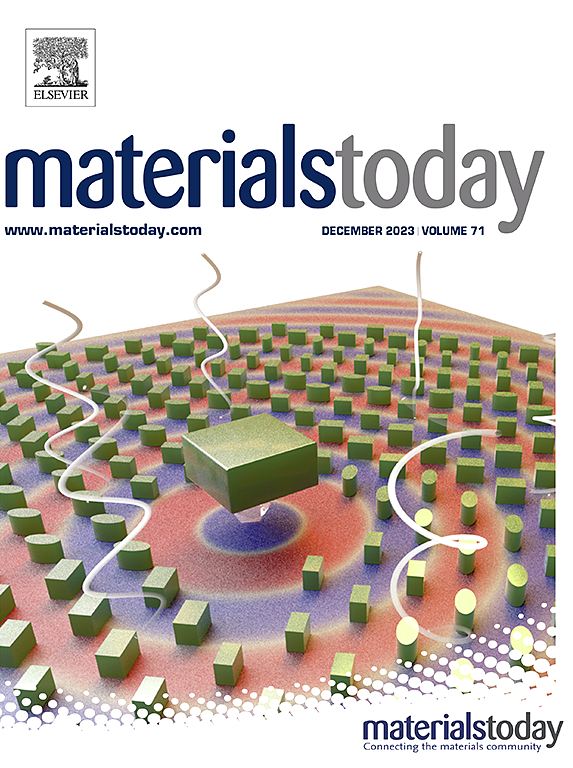Dynamic hydrogel via temporally controlled supramolecular host-guest complex crosslinkers for information self-erasing materials
Abstract
Smart hydrogels based on supramolecular crosslinkers have attracted considerable attentions in recent years owing to their unique dynamic feature and promising properties. How to control the microstructure and macro functions on time dimension, still remains challenge for artificial hydrogels while this is common for natural materials. Here, a supramolecular hydrogel with spatially and temporally controllable modulus and optical properties is developed by in-situ polymerization of acrylamide and host–guest complexes. The guest 1 consisting of electron-poor viologen unit and electron-rich biphenyl unit formed strong 2:2 supramolecular complexes with CB[8] of high binding constant, which provided an efficient supramolecular crosslinkers for hydrogel. Moreover, the hydrogel properties can be tailored on time dimension through controlling supramolecular complexes by introducing Na2S2O4 (SDT) and oxygen to construct a chemical reaction network, resulting in spontaneous gel-sol transition and color change from yellow to dark green. Taking advantage of this feature, an information self-erasing material with controllable lifetime and good rewritability is developed. The lifetime of information can be programmed by adjusting the concentration of SDT, and write-erase process can be repeated at least 16 times. This study provides new insight to develop supramolecular host–guest complexes-based hydrogel with time-dynamic feature.


 求助内容:
求助内容: 应助结果提醒方式:
应助结果提醒方式:


